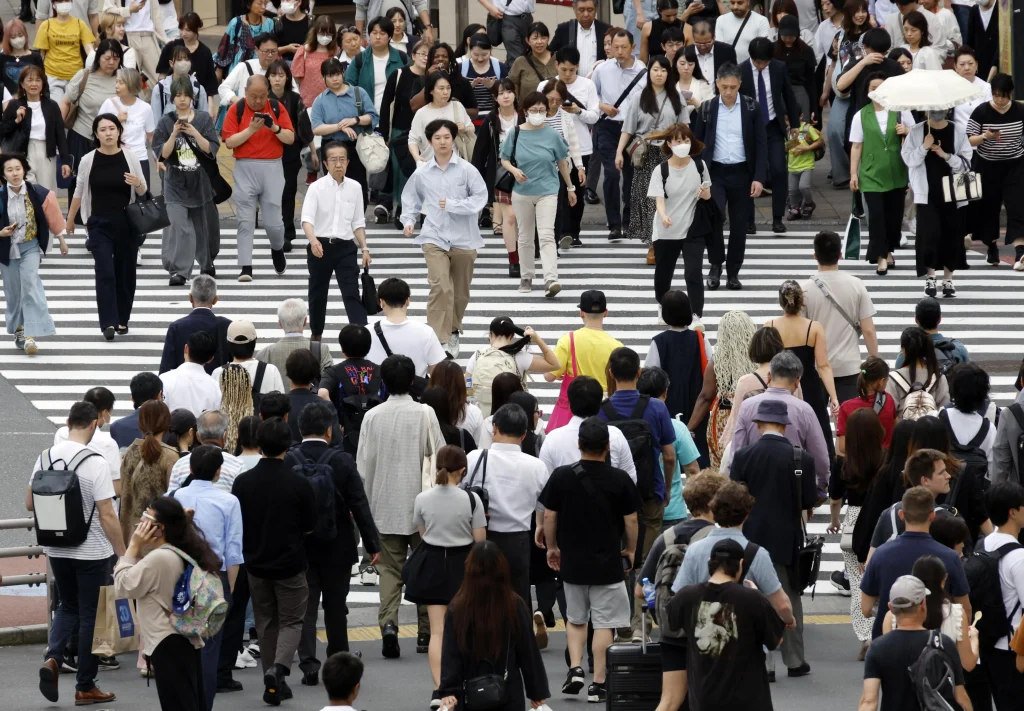[TOKYO] Japan’s economy contracted in the first quarter, a revised estimate confirmed on Monday (Jun 9), weakness that supports the Bank of Japan’s (BOJ) cautious stance and keeps political pressure on Prime Minister Shigeru Ishiba ahead of a key election.
Gross domestic product shrank at an annualised pace of 0.2 per cent in the three months to March, according to the Cabinet Office, a less severe drop than the initial estimate of a 0.7 per cent decline. Economists had expected that initial figure to stand. The improvement was driven by better-than-expected inventory and consumption figures.
Inventories contributed 0.6 percentage point to growth, double the preliminary estimate, while personal consumption managed to eke out growth of 0.1 per cent, versus a prior flat reading. The inventory gain is an indication of greater output, but also points to unsold goods and components, a potential sign of weak demand. Business spending gained 1.1 per cent, a little weaker than first forecasts, while net exports, the main factor pushing the figures into the red, while net exports posted a drag of 0.8 percentage point.
The revised data confirms Japan’s economy shrank even before US President Donald Trump amped up tariff pressure in April, deepening uncertainty for policymakers. The BOJ, which slashed its growth forecast for this year at its last policy meeting, is widely expected to maintain its wait-and-see stance when it next meets on Jun 17.
“Looking at the GDP results alone, it’s hard for the BOJ to justify a rate hike,” said Kazutaka Maeda, economist at Meiji Yasuda Research Institute. “The bank doesn’t need a rate cut, but it needs to wait and see how things unfold. Overall, today’s data is more of a factor that pushes back the rate hike timing.”
BOJ officials remain on alert over the tariff impact, with governor Kazuo Ueda calling uncertainties “extremely high”. He warned last week that tariffs could affect Japan’s economy through multiple channels, pledging to evaluate economic and price developments through a broad array of indicators. Most economists expect the central bank to delay further rate hikes, with a majority anticipating no change in the coming months.
BT in your inbox

Start and end each day with the latest news stories and analyses delivered straight to your inbox.
Japan is contending with a barrage of US tariffs, including a blanket 10 per cent duty on its goods that will rise to 24 per cent in early July barring a trade deal. Sector-specific levies are proving especially burdensome, most notably the 25 per cent duties on automobiles and auto parts, which are eroding exporters’ profit margins.
Japan’s exports fell in the first 20 days of May as the Trump administration’s sweeping tariffs continued to disrupt trade.
Meanwhile, domestic demand remains fragile, offering limited support for the economy. Private consumption growth in the first quarter remained weak, as sustained inflation continued to weigh on household confidence. The nation’s key inflation gauge has been at or above 3 per cent since December, driven by surging food and energy prices.
With consumption accounting for about 60 per cent of the country’s GDP, its weakness is a serious concern for policymakers seeking to achieve a virtuous economic growth cycle. With the economy lacking clear growth drivers, many economists expect a tepid performance in the second quarter, raising the risk of the economy entering a technical recession.
The fragile domestic economy and precarious trade diplomacy pose a major challenge for Ishiba, who faces a key upper house election next month. Ishiba’s approval rating remains under pressure in local polls, hitting the lowest level of his premiership this month.
To alleviate public frustration over rising prices, Ishiba recently introduced relief measures for households that included the resumption of utility subsidies and the release of government rice stockpiles into the retail market.
“Behind weak consumer spending is people’s sense that prices are too high,” said Meiji Yasuda’s Maeda. “Compared to opposition parties the government’s policies are lacking impact, so there’s a risk that people get the impression they are not doing anything.”
At the same time, Ishiba’s government is engaged in negotiations with Washington as several critical deadlines approach in July, including Japan’s vote and the expiration of a 90-day grace period that temporarily reduced Trump’s so-called reciprocal tariffs. Japan, which was quick to initiate talks, now appears to be lagging behind other nations, as the US has already reached an agreement with the UK and a temporary truce with China.
Japan’s lead trade negotiator Ryosei Akazawa said that progress is being made but Japan and the US have not been able to come to an agreement, following his fifth round of talks with US counterparts. Trump and Ishiba are expected to hold talks on the sidelines of the Group of Seven summit gathering. BLOOMBERG


